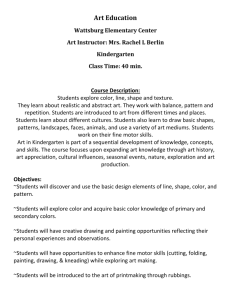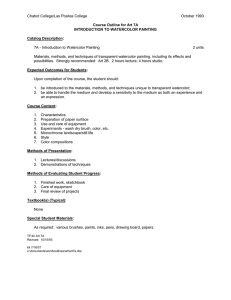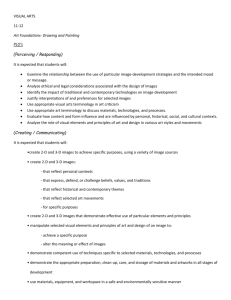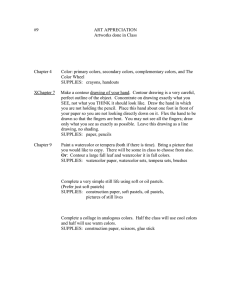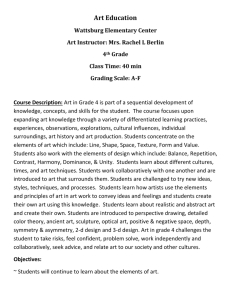PAINTING (3): UNDER THE SEA NAME:______________________ LESSON FOCUS:
advertisement
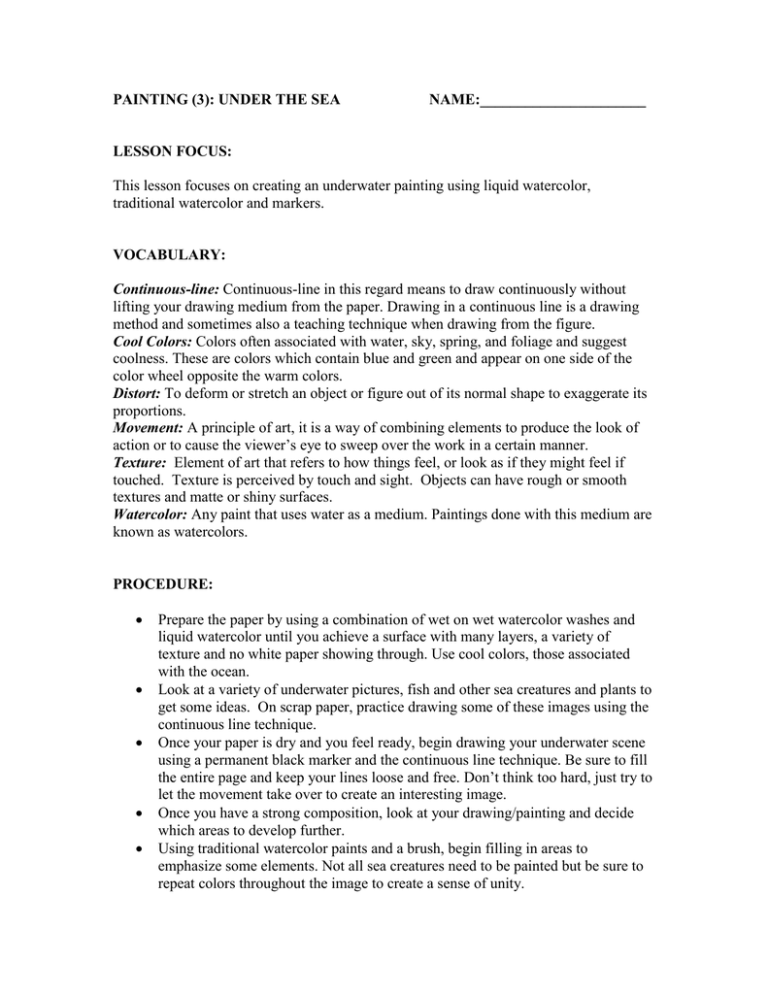
PAINTING (3): UNDER THE SEA NAME:______________________ LESSON FOCUS: This lesson focuses on creating an underwater painting using liquid watercolor, traditional watercolor and markers. VOCABULARY: Continuous-line: Continuous-line in this regard means to draw continuously without lifting your drawing medium from the paper. Drawing in a continuous line is a drawing method and sometimes also a teaching technique when drawing from the figure. Cool Colors: Colors often associated with water, sky, spring, and foliage and suggest coolness. These are colors which contain blue and green and appear on one side of the color wheel opposite the warm colors. Distort: To deform or stretch an object or figure out of its normal shape to exaggerate its proportions. Movement: A principle of art, it is a way of combining elements to produce the look of action or to cause the viewer’s eye to sweep over the work in a certain manner. Texture: Element of art that refers to how things feel, or look as if they might feel if touched. Texture is perceived by touch and sight. Objects can have rough or smooth textures and matte or shiny surfaces. Watercolor: Any paint that uses water as a medium. Paintings done with this medium are known as watercolors. PROCEDURE: Prepare the paper by using a combination of wet on wet watercolor washes and liquid watercolor until you achieve a surface with many layers, a variety of texture and no white paper showing through. Use cool colors, those associated with the ocean. Look at a variety of underwater pictures, fish and other sea creatures and plants to get some ideas. On scrap paper, practice drawing some of these images using the continuous line technique. Once your paper is dry and you feel ready, begin drawing your underwater scene using a permanent black marker and the continuous line technique. Be sure to fill the entire page and keep your lines loose and free. Don’t think too hard, just try to let the movement take over to create an interesting image. Once you have a strong composition, look at your drawing/painting and decide which areas to develop further. Using traditional watercolor paints and a brush, begin filling in areas to emphasize some elements. Not all sea creatures need to be painted but be sure to repeat colors throughout the image to create a sense of unity. See me if and when you think your painting is complete. MATERIALS: 18”x 24” watercolor paper Watercolor paints (traditional and liquid) Assorted brushes Permanent black marker
